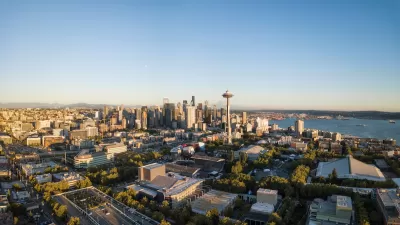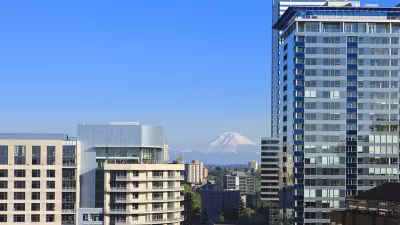A new ULI report finds that innovation in placemaking is about the inter-relatedness of health and the built environment.
Healthy places are never finished,” begins the report by ULI Northwest and ULI San Francisco. "They are continuous efforts and joint enterprises. They require smart development strategies, backed by good policies and adequate public and private investment."
By studying how the built environment affects health in San Francisco and Seattle, the group distilled their research into five major themes important for designing healthy spaces:
- Transportation
- Open spaces to eat healthy food
- Partnership with health care organizations
- Health-motivated innovation in the home and workplace
- Place-making as the key to a holistic approach
The report cites San Francisco's Dogpatch neighborhood as "an example of place-making and open spaces bringing communities together," writes ULI blogger wilheywood. The neighborhood formed the first-ever Green Benefit District (GBD), a neighborhood-controlled property tax assessment for which revenues will be used to "clean, maintain, enhance, and expand open spaces, parks, plazas, parklets, gardens, sidewalk greenings and the Public Realm in general," according to the GBD website.
In Seattle, the two-tower, mixed-used Via6 high-rise apartment, which was "designed to serve the burgeoning urban population of millenials [sic]," is another prime example of healthy place-making. It features first-floor retail and restaurants, an open mezzanine, indoor bike racks, and a bike repair service. The site has a walkability score of 100 (out of 100).
FULL STORY: Five Strategies for Promoting Healthy Lifestyles Through Improved Design of the Built Environment

Rethinking Redlining
For decades we have blamed 100-year-old maps for the patterns of spatial racial inequity that persist in American cities today. An esteemed researcher says: we’ve got it all wrong.

Planetizen Federal Action Tracker
A weekly monitor of how Trump’s orders and actions are impacting planners and planning in America.

California High-Speed Rail's Plan to Right Itself
The railroad's new CEO thinks he can get the project back on track. The stars will need to align this summer.

Washington Passes First US ‘Shared Streets’ Law
Cities will be allowed to lower speed limits to 10 miles per hour and prioritize pedestrians on certain streets.

Montreal Mall to Become 6,000 Housing Units
Place Versailles will be transformed into a mixed-use complex over the next 25 years.

USDOT Could Pull Federal Funding for New York
The federal government gave the state until May 21 to end new York City’s congestion pricing program or risk losing federal funding and project approvals.
Urban Design for Planners 1: Software Tools
This six-course series explores essential urban design concepts using open source software and equips planners with the tools they need to participate fully in the urban design process.
Planning for Universal Design
Learn the tools for implementing Universal Design in planning regulations.
City of Camden Redevelopment Agency
City of Astoria
Transportation Research & Education Center (TREC) at Portland State University
Regional Transportation Commission of Southern Nevada
Toledo-Lucas County Plan Commissions





























